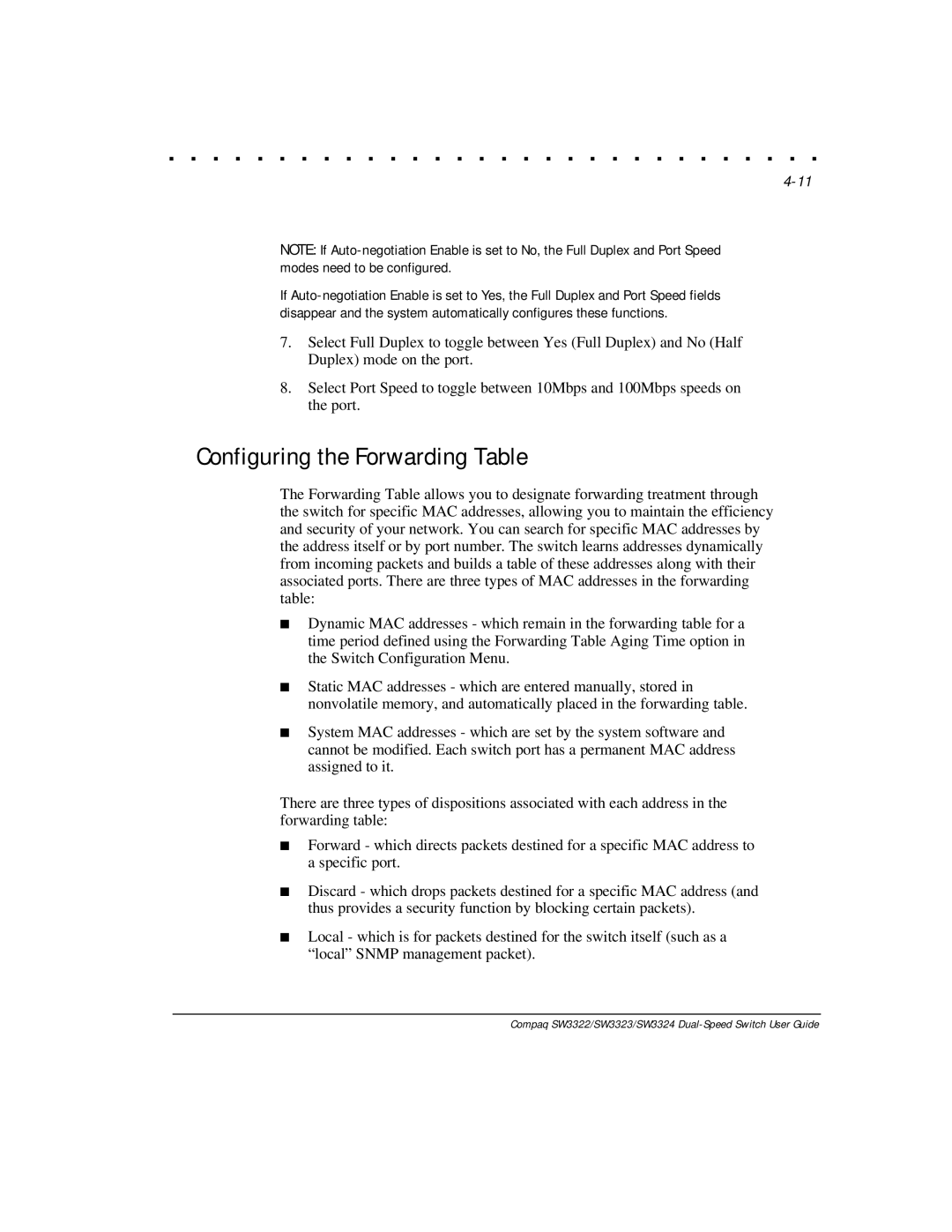. . . . . . . . . . . . . . . . . . . . . . . . . . . . . .
NOTE: If
If
7.Select Full Duplex to toggle between Yes (Full Duplex) and No (Half Duplex) mode on the port.
8.Select Port Speed to toggle between 10Mbps and 100Mbps speeds on the port.
Configuring the Forwarding Table
The Forwarding Table allows you to designate forwarding treatment through the switch for specific MAC addresses, allowing you to maintain the efficiency and security of your network. You can search for specific MAC addresses by the address itself or by port number. The switch learns addresses dynamically from incoming packets and builds a table of these addresses along with their associated ports. There are three types of MAC addresses in the forwarding table:
■Dynamic MAC addresses - which remain in the forwarding table for a time period defined using the Forwarding Table Aging Time option in the Switch Configuration Menu.
■Static MAC addresses - which are entered manually, stored in nonvolatile memory, and automatically placed in the forwarding table.
■System MAC addresses - which are set by the system software and cannot be modified. Each switch port has a permanent MAC address assigned to it.
There are three types of dispositions associated with each address in the forwarding table:
■Forward - which directs packets destined for a specific MAC address to a specific port.
■Discard - which drops packets destined for a specific MAC address (and thus provides a security function by blocking certain packets).
■Local - which is for packets destined for the switch itself (such as a “local” SNMP management packet).
